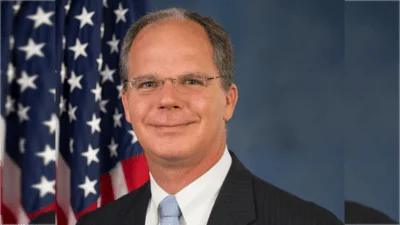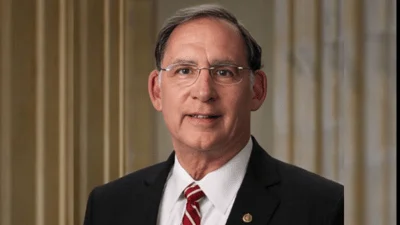The U.S. Senate Committee on Armed Services recently heard testimony on ongoing recruiting challenges the U.S. military is facing and how to increase recruitment.
The Senate Committee on Armed Services is led by Chair Jack Reed (D-Rhode Island) and Ranking Member Roger Wicker (R-Mississippi). Witnesses testifying at the hearing included Under Secretary of the Army Gabriel Camarillo, Under Secretary of the Navy Erik Raven and Kristyn Jones, who is performing the duties of the under secretary of the Air Force.
During Wednesday's hearing on recruiting challenges, Reed said that the U.S. military is facing its most challenging recruiting environment in 50 years. Following two decades of war, coupled by the global pandemic and record low rates of unemployment, recruitment was short by tens of thousands last year, a trend that looks likely to continue.
"Our greatest military asset is its people. We cannot succeed if we do not have adequate numbers of men and women of sufficiently high character contributing to our national defense," Reed said at the hearing.
According to an estimate from the Department of Defense (DOD), the U.S. military needs more than 150,000 new recruits each year to compensate for attrition and retirement, but a decreasing number of Americans are willing and able to serve, as reported by Bloomberg.
Approximately 70% of Americans between the ages of 17 and 24 are ineligible for military service because of obesity, prior drug use, mental health problems, criminal records or the absence of a high school diploma, according to Bloomberg. Only 2% of Americans between the ages of 17 and 21 meet the eligibility criteria and also express an interest in serving in the military, the article said.
Last year, the DOD conducted a survey of young Americans to better understand why they were overwhelmingly uninterested in joining the military. The survey reflected the same top three answers across all services of the military: fear of injury or death, worries about post-traumatic stress disorder (PTSD) and separation from their family and friends. Despite low recruitment numbers, retention is at an all-time high. Once young people join the military service, they are more likely than ever to re-enlist.
Ranking Member Wicker said the DOD should prioritize developing a plan to address low recruitment numbers rather than focus on its current efforts toward developing initiatives to increase diversity in the armed forces. According to Wick, developing a strategic plan to target increasing diversity makes it appear that the military has a problem with diversity when data shows it's more diverse and inclusive than ever. This distracts from the very real problem of low recruitment rates.
Under Secretary of the Army Camarillo said recruitment has been impacted by a combination of long-term problems and market trends including competition with the private sector and issues arising from COVID-19. During the pandemic, recruiters had limited access to students and faculty. The pandemic also affected schooling and education with school shutdowns and other factors causing military entrance exam test scores to drop by 9%.
To increase its competitiveness with the private sector and make it a more attractive career choice, the Army is working to modernize its brand and reform recruiting methods for today's landscape to re-emerge as a career choice with significant benefits to America's youth, Camarillo said.
Camarillo discussed several initiatives the Army is employing to increase recruitment including incentivizing high performers to become recruiters themselves, improving their training and sending them to communities where they have ties. The Army is also experimenting with a soldier referral program, which offers promotions to junior enlisted soldiers for referring prospects that then ship to basic training. This year so far, the program has received 4,900 referrals and produced 68 recruits.
The Army also has launched a new future soldier prep course that invests in young people to improve academic ability and physical fitness so they can succeed in enlisting. The course has produced 330 graduates, a 98% percent success rate. The prep course's success has prompted the creation of two additional units. Camarillo said the Army is focused on investing in improving soldiers' quality of life to ensure recruits that people are cared for and that the Army remains an employer of choice for young Americans.
Under Secretary of the Navy Raven leads the Navy's task force to identify address short- and long-term issues facing recruiting. He discussed a few examples of how the Navy and Marine Corps are improving approaches to recruitment in the competition for talent.
The Navy has been focused on expanding community and school outreach to maintain or reestablish strong relationships with high school partners. It has partnered with the Department of Education to promote the value of military service and improved marketing campaigns to directly appeal to multiple audiences and better convey the benefits of military service. Similar to the Army, the Navy has established to a sailor preparatory course to increase the pool of eligible applicants by providing physical fitness and academic training for high potential candidates.
Like all other branches of the military, retention is high, but the Navy is focused on improving quality of life for recruits and their families to maintain and boost retention and ensure they choose to remain in service. Areas for quality of life improvements include economic security, housing, child care, spouse employment, health care and destructive behavior prevention.
Jones is performing the duties of the under secretary of the Air Force. In response to recruiting shortfalls, she said the Department of the Air Force is launching marketing initiatives to better reach a wider audience of the public. Recent digital initiatives already have increased new user traffic to recruiting websites by 90%. The department also has focused on increasing the presence of in-person recruiters at schools and public events, in addition to establishing an innovative virtual venue to engage with potential candidates.
Other steps include evolving, not lowering, standards to remove barriers and increase opportunities to serve including modernizing policies on tattoos and body compositions. To drive interest and promote the Air Force as an attractive career choice for young Americans, the department is working on improving pay, incentives, initial enlistment bonuses and the enlisted college loan repayment program.
Before concluding the meeting, Reed thanked the witnesses for testimony that provided the perspectives needed to move forward.








